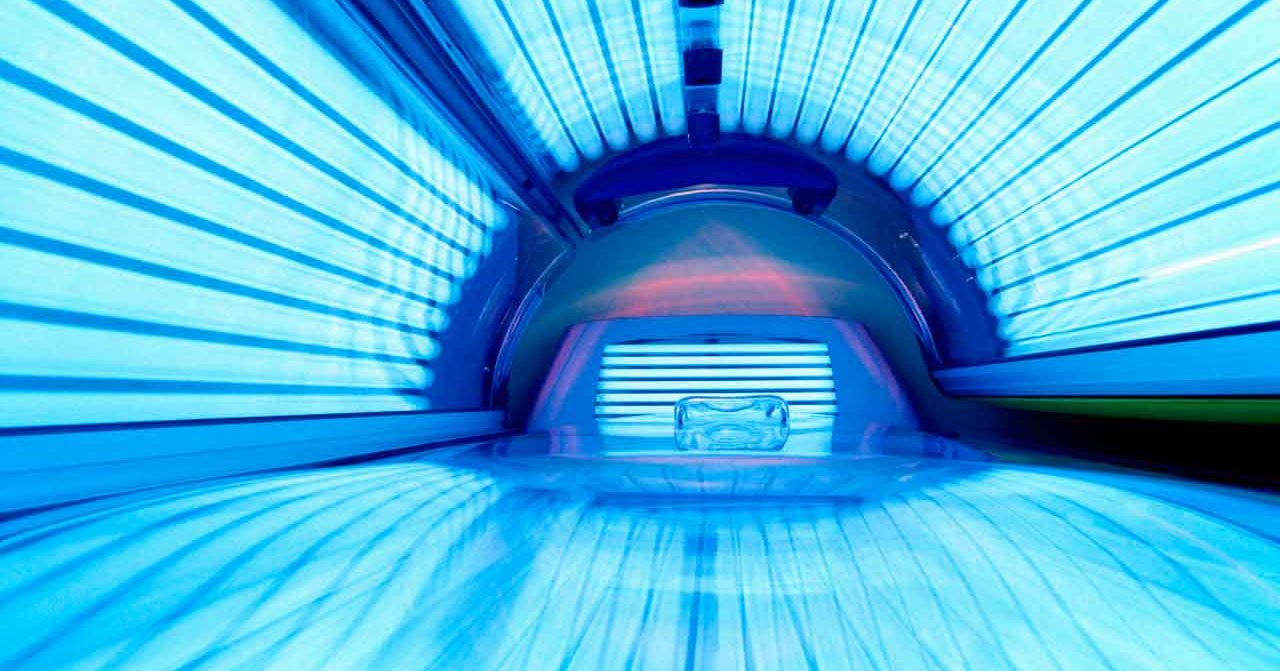Are Tanning Beds Safe?

Although tanning beds give you a golden glow, they also give you something else — wrinkles and possibly skin cancer. Are tanning beds safe or are they bad for you?
As days grow darker and colder during the winter months, many people turn to tanning beds to give them what they think is a “healthy” glow. But what they are getting — an increased risk of skin cancer and prematurely aged skin — is anything but healthy.
Are tanning beds safe?
Cancer is the biggest concern. In fact, a review of 88 international studies about tanning beds and cancer concluded the large number of skin cancer cases attributable to indoor tanning is a major public health issue. The researchers, from Stanford University and the University of California San Francisco, found trips to tanning parlors result in more than 450,000 non-melanoma skin cancer cases and more than 10,000 cases of melanoma (the most serious form of skin cancer) each year in the U.S., Australia, and Europe. In 2009, the World Health Organization classified UV tanning beds as “carcinogenic to humans.”
The culprit that links skin cancer to the use of tanning beds is the same one that links skin cancer to excess sun exposure — ultraviolet (UV) radiation. UVA and UVB rays damage the DNA of skin cells, potentially leading to skin cancer, according to the American Cancer Society. Although sunlight is the main source of UV light, tanning lamps and beds are also sources of UV radiation.
YOU MIGHT ALSO LIKE: 5 Ways to Prevent Skin Cancer
What is skin cancer?
Skin has several layers and skin cancer begins in the outer one (the epidermis), which is made up of squamous cells, basal cells, and pigment-producing cells known as melanocytes. Squamous cell and basal cell skin cancers, often referred to as non-melanoma skin cancers, usually respond to treatment and are not likely to spread to other parts of the body.
Melanoma, however, is aggressive and, if not diagnosed early, can metastasize and be fatal. Although only two percent of skin cancer cases are melanoma , the number of these malignancies is increasing every year, according to the National Cancer Institute.
“Basal cell and squamous skin cancers are clearly linked to UV damage, and there is also a definite relationship with melanoma,” says dermatologist Suephy C. Chen, MD, vice chair of Emory University’s department of dermatology.
“People with fairer skin are at higher risk than people with darker complexions,” she adds. “Teens suffer because they are damaging their skin at a younger age, and are likely to accumulate more damage over their lifetime than their peers who do not go to tanning beds.”
Although tanning beds may seem safer than baking in the sun during the summertime, they’re not. Tanning beds deliver concentrated UV rays. “Both sun exposure and tanning beds are dangerous in that UV rays from both damage the DNA in skin cells. If there is enough damage, then skin cancers will form,” Chen explains. “Even if no skin cancers form, there will be premature aging from the UV damage including wrinkles and ‘liver spots.’”
There’s one argument for the use of tanning beds — they help your body produce vitamin D. “However, this is the most dangerous way to get vitamin D,” Chen says. “It is much safer to take vitamin supplements by mouth.”
How to tan safely
Actually there is no safe tan, Chen says, other than the fake ones that come out of a bottle or spray can and stain your skin a darker or more golden color.
If you love using tanning beds because they seem to make you feel good, you may be right. But the feelings they produce can add to the danger of tanning beds, making it harder to give up indoor tanning. “There have been studies that have shown that the UV rays from tanning beds (compared to sham beds) do make endorphin levels rise, so people become ‘addicted,’” Chen explains.
Even if you’ve been using tanning salons for years, you may head off skin cancer and help your skin by stopping now. “It is the cumulative amount of UV exposure that is harmful, so it is better to stop later than never,” says Chen.
How to check for skin cancer
Your doctor should examine your skin for any signs of skin cancer as part of routine check-ups. However, if you have a strong family history of melanoma, past history of skin cancer, a history of blistering sunburns or use tanning beds, you may need to have skin cancer checks more frequently.
The American Cancer Society also recommends examining your skin for changes monthly. Ask a friend or family member to help you check areas that may be hard to see, like your back and scalp. Report any changes in moles or other areas to your healthcare provider ASAP.
Updated:
March 30, 2020
Reviewed By:
Christopher Nystuen, MD, MBA